Table of contents
Lemon juice (preferably organic ) is popular in drinks due to its fruity acidity, but it also flavors a variety of dishes. Whether lemon juice is raw depends on the production process used.
Use in the kitchen
Lemon juice is obtained by pressing raw lemons . It has a sour, refreshingly fruity taste. It is used as a natural acidifier, culinary ingredient and widely used bar accessory. It is available commercially as direct juice or as juice from concentrate. 1 Whether these are raw food products depends on the production process (maximum temperature). You can make your own raw lemon juice (see the chapter "Your own preparation").
What is the difference between fresh juice, direct juice and fruit juice from concentrate? Fresh juice is pure lemon juice from pressed, raw fruit that is not further processed and to which no additives are added. Direct juice is juice pressed from fruit that is pasteurized (heated to preserve it). Natural fruit flavoring can be added. The production of fruit juice from concentrate involves heating the pressed juice, whereby the water evaporates and a mass (concentrate) remains. Distillation produces the flavorful, clear liquid. The concentrate is mixed with water and flavoring to obtain fruit juice.
Lemon juice is particularly suitable for flavoring and refining drinks and food. It is an important ingredient in many cocktails, such as Gin Sour, Margarita, Basil Smash and Tom Collins - all of which can also be mixed non-alcoholically. Mixed with tap water or sparkling water , fresh lemon juice is a low-calorie refreshing drink. The sour juice can also be used to make delicious lemonades, iced teas and smoothies.
It also spices up salad dressings, such as an oil-free salad dressing with avocado or with walnuts and orange juice , as well as vegan sauces, marinades or dips. Spices and herbs such as sea salt ,pepper , mint , oregano , thyme or rosemary combine perfectly with lemon juice. Ginger , garlic or chili also go well.
The sour freshness of lemon juice also tastes good with pasta (e.g. as a sauce), rice (e.g. as a risotto or in a rice pan with white cabbage ) or shirataki noodles . Vegetables seasoned with lemon juice (e.g. leek , kohlrabi or chard ) and soups are also wonderful. The following recipes are also recommended: cucumber rolls with "goat's cheese" and mint sauce , raw sprout salad with red cabbage and beetroot and sweet and spicy pineapple and cucumber gazpacho with coriander .
Lemon juice is also used as an acidic ingredient in jams (e.g. with strawberries or rhubarb ) and syrups. Vegan, fruity desserts with lemon juice are also extremely popular, whether cakes, slices, tarts, creams or ice cream (sorbet).
How can you balance out too much lemon? If you have too much lemon juice in your food, you can soften the acidity with the sweetness of agave syrup , for example.
You can find possible uses and recipe ideas for lemon peel in the corresponding article.
your own
Making fresh lemon juice is very easy. You need fresh lemons, a cutting board, a knife and, if necessary, a lemon press (manual or automatic). First roll the lemons over the cutting board a few times with a little pressure from the palm of your hand (this makes the juice easier). Cut them in half and squeeze them either by hand or with a lemon press. If necessary, strain the juice through a sieve to remove the seeds and pulp.
How much juice does half a lemon have? Half a lemon gives about 25-30 ml of juice, or about 2 tablespoons.
Vegan recipe for potato and lemon juice soup
Ingredients (for 4 people): 400 g potatoes (starchy), 1 onion , 800 ml vegetable stock , 150 g soy yoghurt , 2 tbsp rapeseed oil , 2-3 tbsp lemon juice, 2-3 tsp lemon zest, some salt andpepper .
Preparation: Peel the potatoes and cut into slices about ½ cm thick. Peel the onion and dice finely. Heat the rapeseed oil in a pan and sauté the onion cubes until translucent. Add the hot vegetable stock and potatoes and simmer covered over a medium heat for about 15 minutes. Add the lemon zest to the soup and puree finely with a hand blender. Add the lemon juice and stir in the soy yoghurt. Season with salt and pepper. Pour the vegan potato and lemon juice soup into soup bowls and, if you like, garnish with parsley and pine nuts .
Vegan recipes with lemon juice (raw) can be found under the note: " Recipes that have the most of this ingredient ".
| Not only vegans or vegetarians should read this: Vegans often eat unhealthily. Avoidable nutritional mistakes . |
Purchasing - Storage
Most supermarkets (e.g. Coop , Migros , Denner , Volg , Spar , Aldi , Lidl , Rewe , Edeka , Hofer , Billa ) and organic supermarkets ( Denn's Biomarkt , Alnatura ) have lemon juice on offer all year round, including organic quality. You can find it bottled in small plastic or glass bottles. Whether it is direct juice or juice from concentrate should be stated on the product. In addition, you can find lemon juice in some shops in the form of pure drinkable fruit juice - mixed with water , pulp and sugar . Some juices contain added antioxidants, which should also be clear on the packaging.
The availability of lemon juice varies depending on the size of the store, catchment area, etc. Our recorded food prices for the DA-CH countries can be found above under the ingredient image - and by clicking you can see their development at different suppliers.
Storage tips
How long does freshly squeezed lemon juice last? Freshly squeezed lemon juice will last in a sealed container in the fridge for about two days. Lemon juice purchased in bottles should be kept in the fridge after opening and used within a week. Watch for the juice to change color and become cloudy. Lemon juice can also be frozen, e.g. in an ice cube tray.
Ingredients - Nutritional values - Calories
Does lemon juice have calories? The energy content of lemon juice (raw) is 22 kcal per 100 g. The protein content is low at 0.35 g/100g and there is also hardly any fat at 0.24 g/100g. It contains 6.9 g/100 g of carbohydrates, of which 2.5 g is sugar. The fiber content is 0.3 g/100 g. 2 The following are three notable lemon juice nutrients.
Does lemon juice contain vitamins? With 39 mg/100g (48% of the daily requirement), lemon juice is rich in vitamin C (ascorbic acid) . Lime juice contains slightly less at 30 mg/100g, orange juice slightly more at 50 mg/100g. Significantly more vitamin C can be found in yellow bell peppers (184 mg/100g). 2
Lemon juice also contains 20 µg of folate (folic acid) per 100 g (10% of the daily requirement). Sauerkraut juice has a comparable content (13 µg/100g). Lime juice contains slightly less (10 µg/100g) and orange juice slightly more (30 µg/100g). Yeast extract (spice paste) contains a lot of folate (3786 µg/100g), but only small amounts are used. 2
Potassium is also included, but only 103 mg/100g, which corresponds to 5% of the daily requirement. The content is comparable to grape juice (104 mg/100g) and apple juice (101 mg). Fennel seeds contain a lot of potassium (1694 mg/100g). 2
The most important organic acid in lemon juice is citric acid (approx. 74 g/l), which accounts for more than 90% of the total acids in the juice. 3
The complete ingredients of lemon juice (raw), the coverage of the daily requirement and comparison values with other ingredients can be found in our nutrient tables. In the article Nutrients explained you will get a detailed insight into the topic.
Health Benefits
Lemons ( Citrus limon ) are rich in citric acid and can prevent metabolic diseases. Citric acid may be useful in the treatment of calcium urolithiasis (urinary stones), especially in patients with hypocitraturia, as citrate is a naturally occurring inhibitor of crystallization in urine. Consumption of citric acid-containing beverages such as lemon juice increases the total volume of urine, reduces saturation with calcium and other crystals, and may increase the excretion of citrate in urine. 4,5 Citric acid-containing beverages are also helpful for people who frequently suffer from fatigue, as their consumption reduces feelings of tiredness. In addition, lemon juice has antibacterial activity. 4
There are clinical studies on the blood pressure lowering effect of lemon juice in the treatment of high blood pressure. In addition, studies have reported that the flavonoids hesperidin and diosmin contained in lemon juice may be effective in chronic venous insufficiency, chronic hemorrhoids and venous leg ulcers. Hesperidin and eriocitrin also have antiproliferative and anticancer effects. 4
You can find out more about the health benefits of lemons and lemon peel in the related articles.
Dangers - Intolerances - Side effects
If you are allergic to lemons, you should also avoid lemon juice. Possible effects include oral allergy syndrome, which manifests itself in discomfort and itching in the mouth and throat area. Skin reactions can appear up to two days later. Preservatives contained in lemons can also trigger such an allergy. 6
Citric acid attacks tooth enamel. You should not brush your teeth (with too much pressure) after eating or drinking acidic foods, as this will cause the upper layers of the teeth to wear down more. Instead, we recommend rinsing your mouth with water. This dilutes the acid and speeds up the replacement of the dissolved minerals. 7
Is too much lemon unhealthy? Since lemon juice is very acidic, excessive consumption can cause stomach pain or heartburn in people with sensitive stomachs.
Folk medicine - natural healing
Lemon juice is often used in folk medicine for colds, minor skin injuries, insect bites and bleeding gums. 8
In northern regions of Turkey, lemon juice is widely used as a remedy for high blood pressure. 9
Lemon juice has long been known to have spermicidal (sperm-killing) properties. 10
Ecological footprint - animal welfare
The ecological footprint of a food depends on various factors. The type of agricultural production (conventional vs. organic), seasonal, regional or domestic production or import by truck, ship or plane, different types of packaging and whether the product is fresh or frozen all play a decisive role. According to The Big Climate Database, the CO 2 footprint of raw lemons is 0.94 kg CO 2 eq/kg. 11
The total water footprint of a product is made up of the green, blue and grey water footprint. The green water footprint refers to the rainwater used to produce the product, i.e. water from precipitation that is stored in the root zone of the soil and absorbed, evaporated and transpired by plants. The blue water footprint is the amount of surface and groundwater needed to produce the product (e.g. from artificial irrigation). The grey water footprint describes the amount of freshwater required to dilute water pollution caused by production and to assimilate pollutants and to meet water quality standards. According to a Dutch study from 2011, a total of 642 litres of water are needed to produce 1 kg of lemons (green water footprint = 432 l/kg; blue water footprint = 152 l/kg; grey water footprint = 58 l/kg). 12
In conventional agriculture, synthetic pesticides and herbicides are often used to combat unwanted plants and insects. However, these have been proven to have a negative impact on the environment and affect important pollinators, as well as birds and mammals. Pesticides are often also found in the end product, as in lemons. 13 Accordingly, when buying lemons and lemon juice, you should not only pay attention to the country of origin and the shortest possible transport routes, but also to buy organic products. The use of such pesticides is prohibited here.
Worldwide occurrence - cultivation
It is believed that the center of origin (gene center) of edible citrus fruits is in the southeast of the Himalayas in the area of Assam, northern Myanmar and western Yunnan. 14
There are conflicting opinions about the origin of the lemon ( Citrus limon ). One theory suggests that lemons arrived in India relatively late, while others believe that they were mentioned in early Sanskrit texts dating to around 800 BC. Still others have suggested southern China or possibly Upper Burma as the area of origin. 15
According to records, lemon juice was used in ancient Egypt, about 2000 years ago. 16
Industrial production
Industrial production of lemon juice often includes the simultaneous extraction of lemon oil. It is important that the juice and oil are not constantly in contact (quality). In this method, machines hold lemons in a cup in which prongs act as a retaining wall. A similar cup with interlocking prongs is lowered and squeezes the fruit. At the same time, a stainless steel tube is inserted into the fruit from below. The juice flows into the tube and thus through a filter. At the same time, machines spray water over the lemons as they squeeze. The oil released from the burst oil cells in the peel is washed down in an oil-water emulsion. 17
The basic principle of other methods is the same as that of the kitchen lemon press: rotating grater heads press juice out of lemon halves. The oil is extracted either before halving the fruit or after squeezing. Extracted, still intact peel is used to make candied lemon peel . 17
After pressing, the juice is sieved or centrifuged to remove pulp and seeds. Regardless of the subsequent treatment of the juice, it should be subjected to a short-time heating of 30 seconds at 82 °C, which kills perishable microorganisms and inactivates pectic enzymes that could otherwise cause clouding of the product. Chemical preservatives are not absolutely necessary, as the juice is sterilized by short-time heating. Many processors still add preservatives after heat stabilization. Lemon juice is then filled directly into cans or bottles, which are then sealed and refrigerated. 17
Further information
Lemons come from the lemon tree (Citrus limon ) and belong to the genus Citrus within the Rutaceae family. The species Citrus limon is the result of a cross between citron ( Citrus medica ) and bitter orange ( Citrus aurantium ). 15
Other related species of the genus Citrus are: lime ( C. latifolia and C. aurantiifolia ), orange ( C. sinensis ), tangerine ( C. reticulata ), clementine ( C. clementina ), pomelo ( C. maxima ), pomelo ( C. grandis ) and grapefruit ( C. paradisi ). Popular citrus fruit juices besides lemon juice are orange juice and lime juice .
Whether the citrus plants mentioned are valid species in the botanical sense is controversial. Some are of the opinion that there are only three valid basic species of the genus Citrus , namely citron ( C. medica ), mandarin ( C. reticulata ) and grapefruit ( C. maxima ), and that the rest are introgressive hybridizations of the basic species. Others include Mexican lime ( C. aurantiifolia) , Micrantha ( C. micrantha ) and Citrus halmii in the list of basic species in addition to the three species mentioned above. 18
Note: Since most of the plants just mentioned are hybrids, i.e. new plants resulting from crossing different species, an "x" is actually needed in the botanical name between the genus name and the species name, e.g. Citrus x limon for lemon.
Alternative names
Lemon juice from concentrate can sometimes be found under the name lemon concentrate.
In English, raw lemon juice is called raw lemon juice.
Other uses
The acidic juice of a lemon is also used as an environmentally friendly cleaning agent in the household.
Lemon juice, along with onion juice, milk, vinegar and urine, acted as invisible ink. The acid weakens the paper fibres, so that weakened areas first turn brown when held over a flame or light bulb. Invisible ink has been around at least since the Persian Wars in the 5th century BC. 19

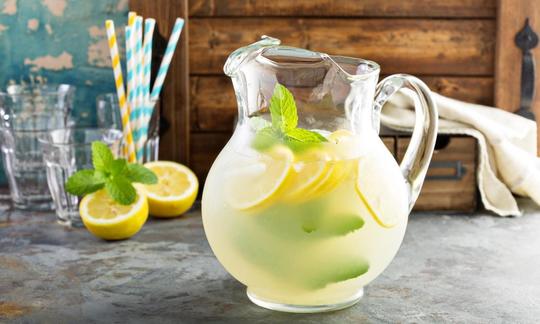

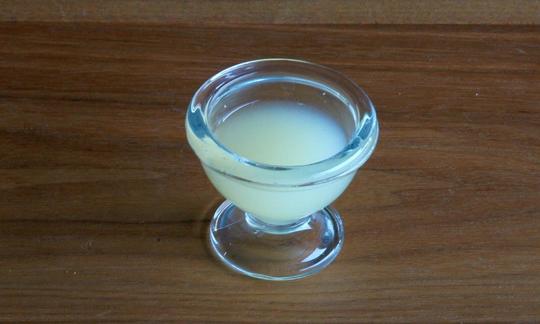

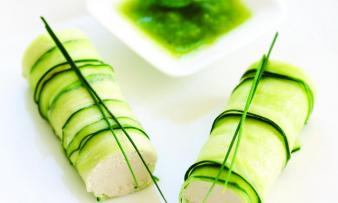
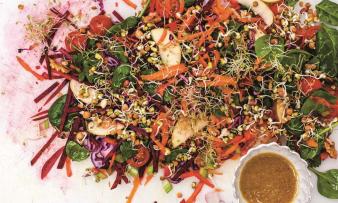
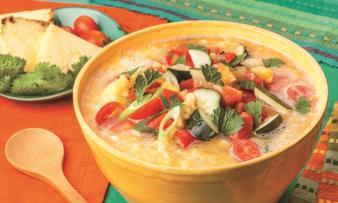





Comments